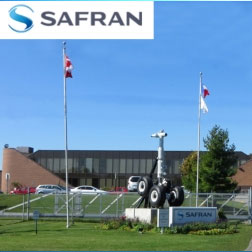
Safran is the world leader in landing and braking systems for both civil and military airplanes and helicopters, including: landing gear, wheels and brakes, as well as associated systems (steering, landing gear extension/retraction, braking control, monitoring).
Safran deploys the most advanced engineering in this field. We have worked with Airbus for more than 30 years, and we are an established partner to some 30 civil and military aircraft manufacturers in all main categories.
The Toronto site has been manufacturing landing gears for over 70 years. Activities include a total capability from concept to in-service support including design, development, test, manufacture, assembly, sales, marketing and product support.
Core competencies at Toronto include the design and development of fully integrated landing gear systems that comprise not only the traditional main and nose landing gear components, but ancillary systems such as steering control, landing gear control & indication, emergency control, brake control, wheels, brakes, tires, door mechanisms and electrical harnesses. The manufacture of critical landing gear components remains one of Toronto's principal activities and the facility also has a state-of-the-art final assembly area where landing gear systems for a variety of aircraft programs are fully assembled and tested prior to delivery to the customer.
Programs include Boeing 787, Bell/Agusta BA609, Bell-Boeing V-22 Osprey, Boeing F/A-18E/F, Bombardier's Global and Challenger families, the CRJ200 and Dash-8/Q100, Q200 & Q300, Dassault Falcon 7X, Raytheon 800 XP and Hawker 4000.
Recognized for our expertise and innovative solutions (with around 11% of annual revenues being reinvested in R&D), Safran covers the entire product life cycle: design, manufacture, integration, MRO (maintenance, repair, overhaul).
Safran pioneered the use of carbon brakes, replacing traditional steel brakes starting in the 1980s. This technical revolution resulted in significant weight savings and allowed faster cooling of brakes and therefore quicker aircraft turnaround. Furthermore, carbon brakes offer twice the endurance of their steel counterparts, allowing airlines to reduce maintenance costs as well as fuel consumption.
Surface at the Ajax, Ontario facility: 21,000 m² (226,000 ft²).
Activities include Design & Stress Engineering, Test & Development Engineering, Systems Engineering, OE Manufacturing & MRO.
Ajax, Ontario L1S 2G8
Canada
Event Map


Event Comments